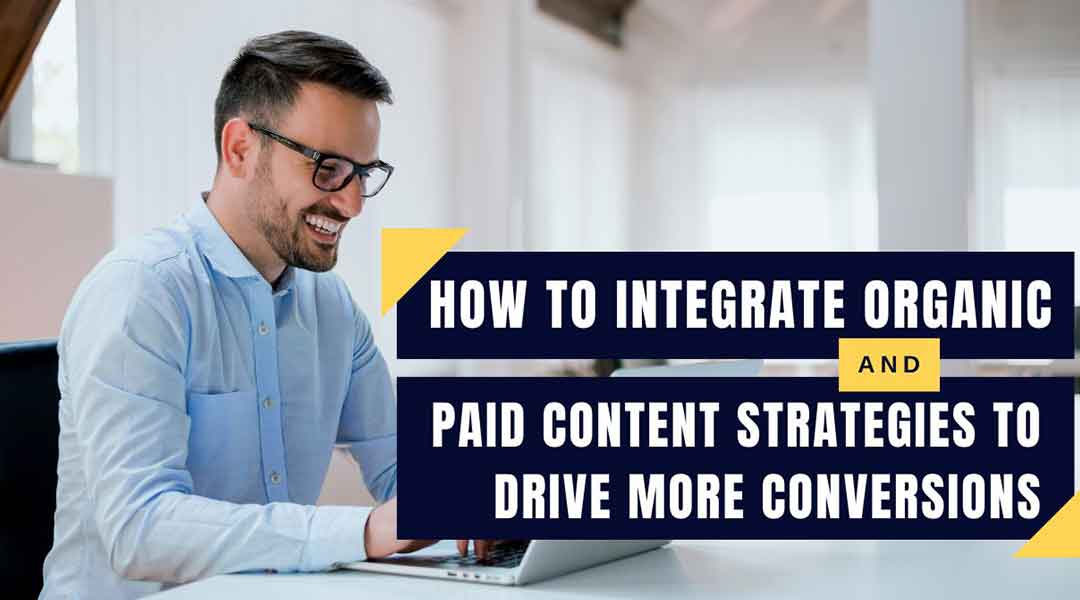The discussion of organic reach vs. paid reach is one that social media marketers have had for years. And, with this continuously changing landscape, the conversation is only getting louder.
The entire marketing community seems to have strong opinions on the matter. Some believe that paid reach is the key to success on social media, while others argue that organic strategies are still the best way to connect with consumers.
The truth is both methods have their unique advantages and disadvantages. And to create a successful marketing strategy, you need to learn how to use both methods in tandem.
As more and more brands start using social media to connect with consumers and promote their products or services, the reach of organic content has decreased. This trend will likely continue as the platforms make changes that favor paid content.
Businesses need to use a powerful integration of paid and organic content marketing strategies to connect with their target audiences and achieve their desired results.
Leveraging these methods together can help brands in:
- Mitigating the loss of organic reach
- Improving customer satisfaction, engagement, sentiment, and loyalty
- Creating brand awareness among new audiences
- Increasing conversions and sales
11 Tips for Combining Paid and Organic Content Strategies
Modern consumers are bombarded with content from all sides. To cut through the noise and reach your target audience, you need to have a solid plan in place.
Here are a few tips for those looking to combine paid and organic content strategies:
1. Create a Message Map Before You Create Any Paid or Organic Content
Your message map is the key to success when it comes to content marketing. This document will serve as your guide, helping you to determine what content to create and how to best use paid and organic strategies to reach your target audience.
Start by identifying the problem you’re trying to solve for your target audience. This key message will be at the center of your message map. From there, you can start to create supporting messages that will help to reinforce your key message. These messages should be based on customer needs, pain points, and objections.
Finally, determine which content formats will most effectively deliver your message and achieve your desired results. Will blog posts, infographics, or videos be most impactful?
Your message map will help you create relevant and valuable content for your target audience. And it will also ensure that all of your content – paid and organic – is working together to support your overall marketing goals.
2. Run PPC Ads and Then Target High CPC Keywords With SEO
Search engine optimization and paid search are effective methods for reaching your target audience. And, when used together, they can significantly boost your marketing efforts.
One way to combine these two strategies is to run pay-per-click ads and then target the high cost-per-click keywords with your SEO efforts. This will help you to get real-time feedback on which keywords are performing well and then allows you to apply those exact keywords to your SEO efforts.
This approach can help you to lower your overall ad spend while still reaching your target audience. And it can also give you a better understanding of which keywords are most likely to convert, allowing you to create more effective content down the line.
3. Use Paid Ad Data to Find Strong Keywords for Your Headlines
Your headlines are one of the most important elements of your content. After all, if your headline doesn’t grab attention, no one will read your content.
Utilize paid ad data to determine the strongest keywords that could be used to create impactful headlines. The best way to evaluate these keywords is to look at click-through rates. You can then incorporate these keywords in your page title, helping your content resonate more with your users.
4. Use a Mix of Organic and PPC Keywords Strategies for Your Landing Pages
Landing pages are where the rubber meets the road in terms of your content marketing efforts. This is where you’ll be driving users to convert, whether that means subscribing to your email list, making a purchase, or downloading a piece of content.
Organic and paid keyword strategies can both be used to drive traffic to your landing pages. And when used together, they can significantly boost traffic and conversions.
For example, you can utilize paid search to drive traffic to a landing page that is centered around a value-up-front content piece, such as an ebook or white paper. This will help you get in front of your target audience and deliver the content they’re looking for.
At the same time, you can also use organic keyword strategies to drive traffic to your landing pages. This can be done through blog posts, infographics, or other content optimized for the keywords your target audience is searching for.
By using a mix of organic and paid keyword strategies, you can ensure that your landing pages get the attention they deserve.
5. Boost Engagement and Conversion Rates by Promoting Existing Content
Google’s recent algorithm updates have shifted the focus from keywords to engagement. As a result, it’s become more important than ever to create content that is relevant and engaging.
You can integrate organic content and paid ads to boost engagement and conversion rates. For example, if you have a blog post that is performing well organically, you can use paid ads to boost it. This will help you reach a wider audience and provide new data about your audience that you may not have had before.
6. Align Your Brand Message and Its Content Backdrop
The content backdrop is the environment in which your brand message will be delivered. It’s important to align your brand message with its content backdrop to increase your brand authority.
For example, if you’re an expert on white-label SEO, you’ll want to share your expertise on publications that are relevant to the SEO industry. This will help you attract more engagement and boost your brand’s reputation.
Moreover, ensure that the content you are sharing is in line with the publication’s values. This will help you build trust with your audience and make it more likely for them to take your advice.
7. Leverage Your Online Mentions to Advertise Your Articles
Track your brand’s online mentions using a tool like Google Alerts or Mention. This will help you to see where your brand is being talked about online.
If you see that your brand is being talked about on a high-authority website, you can use this as an opportunity to advertise your content. For example, you can create an ad that says, “As seen on XYZ website.” This will help you to get in front of a new audience and can also boost your brand’s reputation.
8. Optimize Your Organic Content With A/B Tested Custom Paid Ads
Organic reach is declining on social media, making paid ads more important than ever. But rather than boosting organic posts, create custom paid social ads and do A/B tests to optimize results. Then, use the learnings from those tests to update and optimize your organic content.
This approach will help you get the most out of your content marketing efforts and increase your conversion rates. However, it’s important to note that this approach takes time and effort. If you’re not willing to put in the work, you may partner with a content marketing agency that specializes in this approach.
9. Increase the Reach of Your Organic Content With Paid Ads
One of the most efficient ways to integrate your paid and organic content marketing efforts is by using paid ads to extend the reach of your organic publications. This approach will help you to get in front of a new audience and can also provide new data about your audience that you may not have had before.
To do this, you’ll need to track your organic reach using a tool like Google Analytics. Once you have this data, you can use it to create custom audiences for your paid ads. For example, if you see that your organic reach is strong on Facebook, you can create a Facebook ad campaign that targets those same users.
10. Boost Your Podcast Interviews, Tips, and Clips
Podcasting is a great way to build your brand and attract new customers. And while you can promote your podcast organically, you can also use paid ads to give it a boost.
One way is by boosting a podcast clip, interview, or tips coming from an expert. You can keep audiences interested for longer if you integrate paid ads with such clips. This will have a great impact on overall reach and engagement.
This approach can also help you segment your audience and attract new listeners who may be interested in your content. For example, if you have a podcast about white-label SEO, you can create an ad campaign targeting those interested in SEO.
By doing this, you’ll be able to get in front of a new audience and boost your brand’s reputation.
11. White Label Your Creator And Influencer Partners’ Content
Influencer marketing is a great way to promote your content and attract new customers. But rather than working with influencers who post about your brand on their channels, white label their content and post it on your channels.
With white labeling, you can control the content’s message, image, and tone. This will help you to ensure that your brand is being represented in the best light possible. And because you’re posting the content on your channels, you’ll be able to get in front of a new audience.
To find influencers who are willing to white label their content, you can use a tool like BuzzSumo. This tool will help you find influencers in your industry with a large following.
In today’s social media-driven world, a successful content marketing strategy requires a mix of both paid and organic content. By integrating these two approaches, you can reach a wider audience, boost your conversion rates, and improve your overall ROI.










One comment
Garrett Coop
November 13, 2022 at 1:14 pm
I have to say this is an informative blog and new tips learned about combining paid and organic content strategies.
Comments are closed.